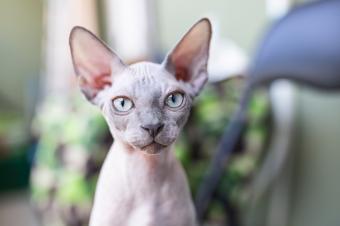
Yes, Bengals are considered hypoallergenic. However, it is important to understand what this means. The word "hypoallergenic," means "less likely to cause allergies." It does not mean that a hypoallergenic breed cannot cause an allergic reaction.
If you love cats but have mild allergies, Bengals might be the perfect breed for you because they're very mild shedders. They also produce fewer of the proteins in their saliva and skin that cause allergic reactions. Plus, there are steps you can take to keep your cat's allergens under control and help minimize your cat allergies.
Why Is the Bengal Hypoallergenic?
Even though Bengal cats are hypoallergenic, they can still cause an allergic reaction. If you have cat allergies, it's generally not the cat's fur you are allergic to. You're allergic to a protein called Fel d 1, which is found in the cat's saliva and dander.
Cats deposit this protein onto their hair when they lick themselves, or their dander can enter your eyes, lungs, or nose when a cat sheds. Some breeds, like the Siberian and Sphynx, produce low amounts of Fel d 1, although the Bengal isn't one of them.
So why are Bengals thought to be hypoallergenic? Bengals are very mild shedders, which explains why they are one of the best cats for people with allergies. They have a very silky, flat coat like their Asian leopard ancestors. Instead of depositing the allergen proteins into the environment via shedding, these stay confined to the Bengal.
Bengal cats technically have pelts rather than fur. Their coats are sleek, short, and glossy, which means they typically shed less and cause fewer allergic reactions.
Tips to Minimize Cat Allergies
Of course, if you snuggle your cat with your face in their fur, you could potentially react to the allergens in their dander or saliva. However, you can take proper precautions to minimize the number of allergens on your Bengal so you can enjoy time together without sneezing.
- Brush your Bengal daily to remove loose hairs and dander.
- Wipe your Bengal's fur with a pet wipe or damp towel to remove any allergens before cuddling.
- Bathe your Bengal every four to six weeks.
- Manage allergens in the environment with a high-efficiency particulate air (HEPA) filter.
- Routinely dust, vacuum, and mop the areas and surfaces where your Bengal spends time.
Fact: Bengals Are Nearly Hypoallergenic
The Bengal is an excellent choice for a pet, whether you have mild allergies to cats or just dislike finding stray cat hairs around. Their beautiful, silky pelt sheds very minimally, so you can enjoy time together without over-worrying about shedding or itchy eyes.







